A Comprehensive Guide to Road Traffic Control Equipment
Read more...
Author: Jack Anderson Date Posted:4 April 2022
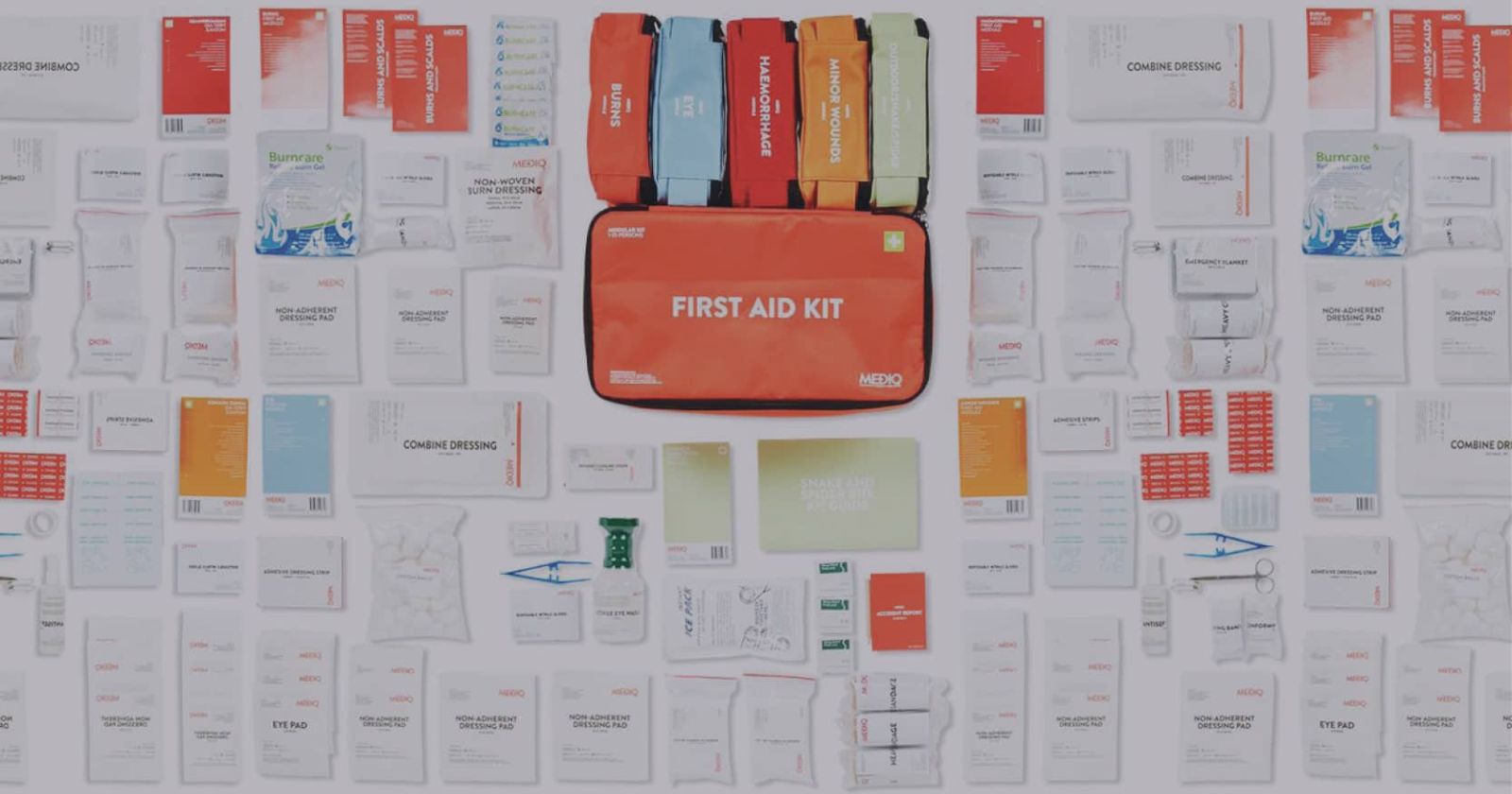
No matter where you work, having a first aid kit nearby is essential for proper workplace safety. In fact, it is part of the duty of care all employers and businesses must provide for their employees.
Whether we like it or not, the reality is that accidents and injuries can occur anywhere at any time, regardless of the type of work you do, or even where you do it (i.e. workshops, outdoors, vehicles, offices etc.).
Having a fully equipped first aid kit can be the difference between life and death, so it’s vital that your nearest one is kept stocked and up to date.
That being said, you might be asking, “what exactly are the contents of a first aid kit?” Here we will take you through a list of first aid equipment that every well-prepared kit is made of.
Unfortunately, first aid kits are not a one size fits all type of item. The contents depend on the location, the activities you are carrying out and risks associated with them.
For example, a workshop or warehouse requires first aid kits capable of handling a range of severe medical emergencies associated with the work that takes place, whereas a first aid kit for an office might only accommodate a smaller amount of these.
Another important detail to note is that your first aid kit should be designed depending on your ease of access to professional medical personnel. Workplaces located over an hour from paramedic or professional medical support should supply a more comprehensive first aid kit than a workplace next to the hospital
The contents of all first aid kits should be designed in accordance with Safe Work Australia’s First Aid Code of Practice.
Regardless of the type, there are several essential items that should appear every first aid kit. These include:
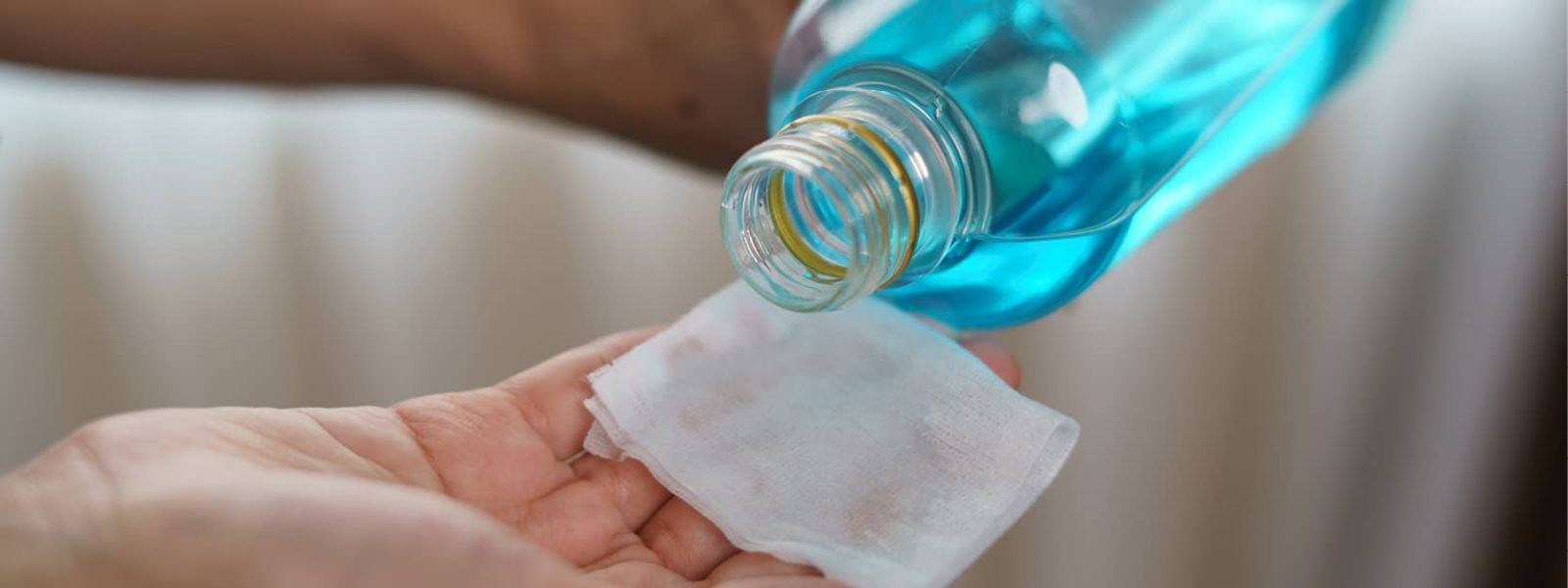
Antiseptics are used to clean wounds and disinfect skin. They prevent infection by stopping or slowing down the growth of disease-causing microorganisms.
There are a variety of different types of antiseptics all with differing usages within first aid, medical procedures, and hygiene practices. The most common ones found within first aid kits are alcohols such as isopropyl alcohol and ethyl alcohol.
It is recommended to use antiseptics to remove any germs or harmful bacteria from your hands before tending to a wound. By now (2022), I’m sure most of us are quite well acquainted with using hand sanitizers and antiseptic hand washes before and after doing absolutely anything.
When cleaning a wound, it is also best practice to first apply antiseptics. This is usually done using a sterile gauze or non-shedding material – more on this in the next section.
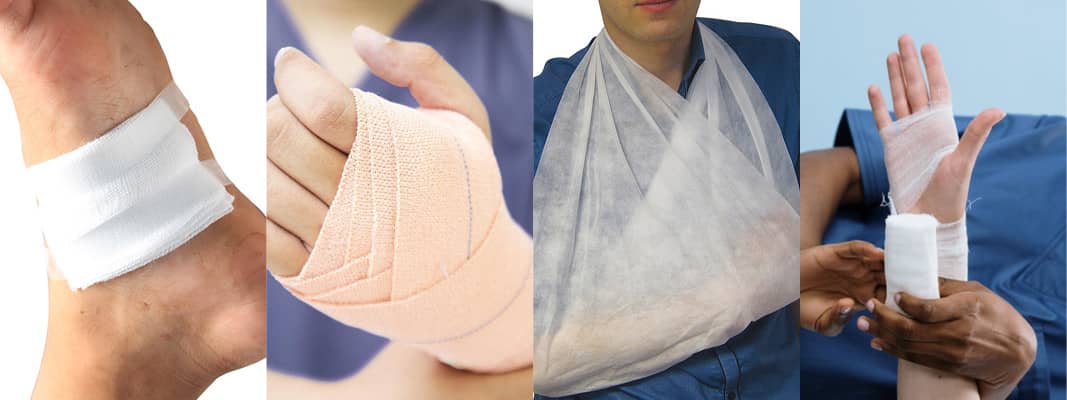
Bandages are pieces of material regularly used for covering wounds, keeping wound dressings in place, providing compression, support and sometimes restriction. Dressings are usually used in conjunction, as the main sterile layer of material that contacts a wound.
Below are some of the main types of bandages & dressings that you are likely to come across:
Gauze is made from light, open weave cotton fabric and comes in many shapes and sizes suited to fit a range of wounds. The material is very absorbent and aims to limit the amount of shedding to keep the wound clean.
Gauze is commonly applied to a wound after disinfection and held in place using bandages.
It can also come in an adhesive form that most know as ‘band-aids’ or plasters. These are ideal for smaller, less serious wounds and fast applications.
Roller bandages are - surprise, surprise - a roll of bandage material – usually made from cotton.
This type is usually used to wrap and support gauze dressings. That said, because they are commonly sterile, cotton bandages can be used directly for wound compression if necessary.
The other, tan-coloured variety of roller bandage is elastic. Elastic roller bandages, also known as compression bandages, are used for sprains and strains, often on joints such as ankles or elbows.
In the case of a snake bite, a heavy weight bandage is an essential item in a first aid kit. This is a type of elastic bandage that is applied very tightly on a snake bite in the ‘pressure immobilisation technique’. This requires the material to be stronger or ‘heavy weight’.
I have a way of remembering this: heavy weight bandages are like world heavy weight champion Tyson Fury, so the bandage is one that I “ties on with fury”. It might be a stretch, but I dare you to look at a heavy weight bandage now without remembering it.
Fun fact: in UK it is recommended to wash snake bites but in Australia it is recommended to leave the venom as it’s critical to identify the right antivenom. This is because many Australian snakes have neurotoxic venom which can cause paralysis. Ok, so maybe it wasn’t that fun, but it was definitely a fact.
A triangular bandage is often used to form different kinds of slings and can be made from disposable paper as well as bandage material. Their other uses include as a cold compress (when folded) and for applying wound pressure.
Please do not use them as a hanky, despite their similarity, because your schnozz probably doesn’t need that kind of pampering and if one of your co-workers breaks their arm, they might not be too pleased with a pre-loved sling…
If a wound occurs near fingers or toes, then the best wrapping for it is a tubular bandage. They keep dressings in place these hard-to-wrap places and can keep them secure in areas such as knees or elbows which shift around as the person moves. And yes, whilst I am impressed with how “totally tubular” they are, tubular bandages are called that because they’re literally shaped like tubes.
The first step in treating a burn is to run cool water (or other available, cool, clean liquid) over the area for at least 20 minutes. But once this is done, a first aid burn gel can be applied. This gel is applied in a layer on the burn to cool it down. Also useful on a burn is a non-adherent dressing which, along with the burn gel, stops any bandages from sticking to the skin, which makes removing them later much less uncomfortable.
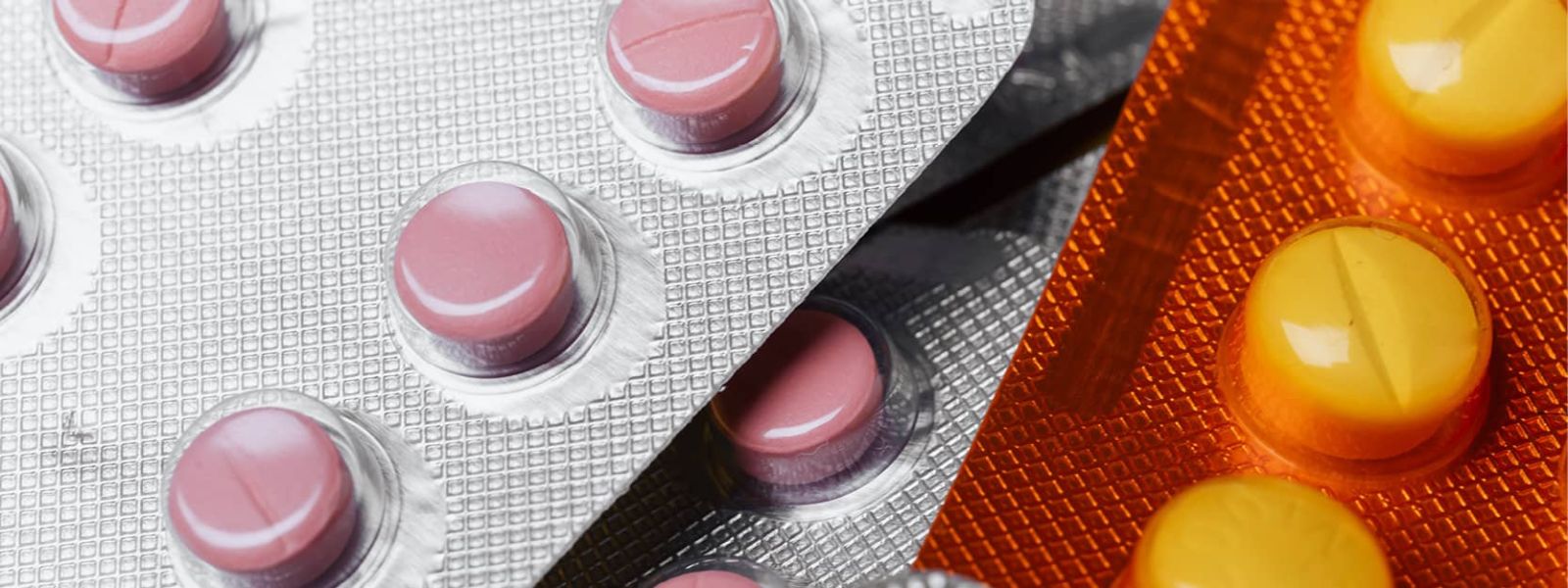
First aid kits aren’t just for severe or disastrous wounds but help to alleviate common ailments such as stomach aches, allergies, and pain. It can mean the world of difference to not have to go a full workday sneezing and snorting from hay fever, both for the afflicted individual as well as the people who have to listen to that the whole time.
And I don’t have to paint a picture how useful anti-diarrhoea medicine is, it does that all by itself.
While these medicines are often used in less severe cases, they can provide some amount of relief even in grievous situations, making them a necessary addition to anyone’s list of first aid equipment.
It’s a smart idea to get the healing process started early and ointments can do just that. Sometimes people forget sunscreen and a soothing ointment can ease sunburn much faster.
Similarly, antiseptic and antibiotic ointments are great for minor scraps, cuts or skin infections and get out in front of them before they turn into anything nastier.
Of course, in a workplace injury, having some decent pain relief on hand is useful. But sometimes a mild headache seems contagious. They can make people irritable and restless. But a simple pain relief medicine can put everyone at ease.
Mild fevers are similar, but most people don’t realise common pain relief medicines like ibuprofen have a fever and inflammation reducing effect as well. Of course, a paracetamol isn’t going to fix a broken arm, but you might be surprised how much help it can be on a day-to-day basis.
Every now and then we come across something that makes our nose itchy and our eyes water. Often it goes away within a day or two, but antihistamines are another one of those minor miracles of modern medicine that just make these issues better.
And whilst many people who suffer extreme allergies carry their own EpiPen, if you know someone on your team has a severe allergy it’s still essential to have one on hand for any scenario that might arise.
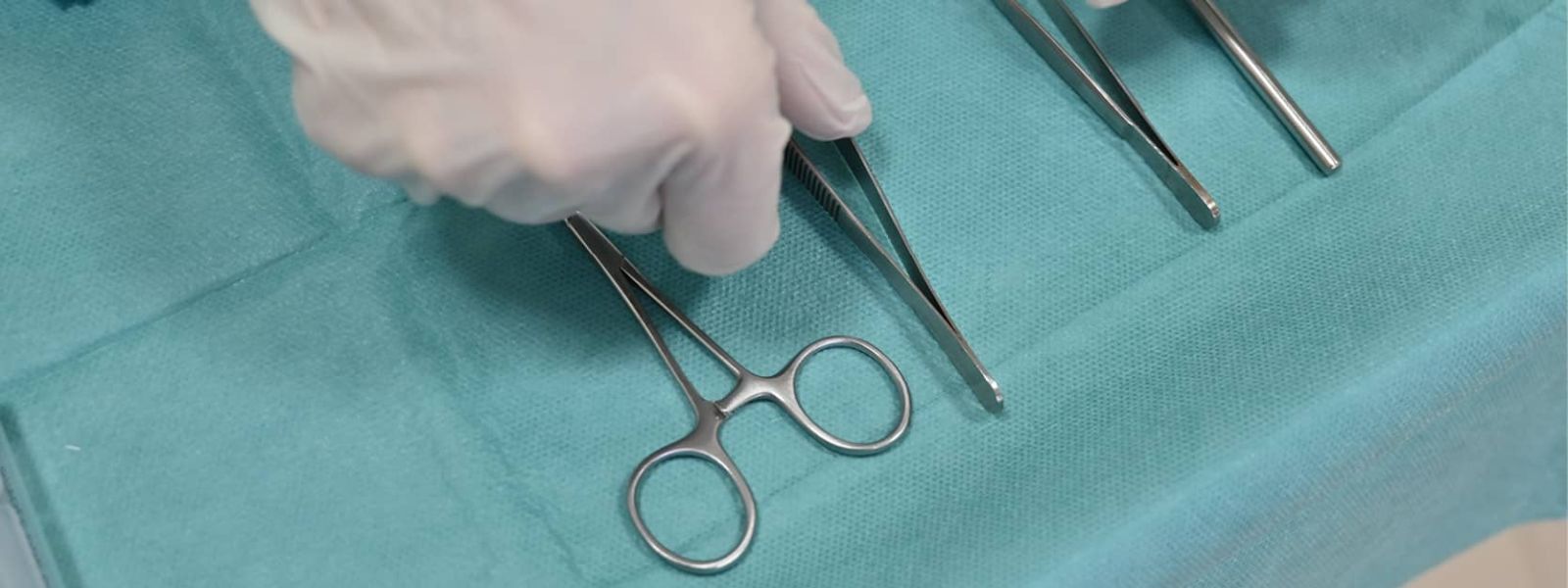
It’s also incredibly useful to have some basic medical tools on hand. A pair of tweezers is a much more effective and hygienic way of removing a splinter than trying to pick it out with your fingers.
Trauma shears can help you get out of a bind, literally, as well as cutting bandages and gauze. And a thermometer is useful for that showing that one person who always says “I’m fine” when they look pale as ghost and are clearly in discomfort.
Something as simple as a clean, plastic tray is often included with these basic medical tools. It’s one of those items in a first aid kit that you don’t think about until you find yourself trying to calm down a wounded friend (or colleague) and realise you need a clean place to put things down for a second.
Some basic treatment supplies can be useful in nearly all work environments. Hot packs are useful for muscle pain or stiffness and cold packs are great for reducing swelling. Even in situations where someone sits at their desk all day, their calves can become tight, especially in cold air con, and a heat pack can bring enormous relief. Regular stretching also helps, but who remembers to do that?
Our Mediq first aid kits are a great example of well organised, comprehensive, and carefully considered first aid kits. The options range from smaller packs like the vehicle first aid kit, perfect for stowing, to the larger cabinets stocked with modular kits as well as tackle boxes for everything in between. And there are complete refill bundles to make resupplying first aid kits a breeze.
The module kits are incredibly useful, making sure when you reach for your medical supplies, the contents of the first aid kit are specialised for the injury at hand. There are modules for burns, eye injuries, minor wounds, snake/spider bites, and for haemorrhages (major bleeding). The last thing you want in an emergency is to wonder if you’ve got everything you need to treat a wound and the modules bring that peace of mind. These modules can come as individual soft packs or in a first aid kit cabinet.
All you need to know is what injuries might be faced in your workplace and the Mediq kits have got you covered.
If you need to tidy up on your safe work knowledge (or simply want a bed time story that will get you a good night’s sleep), make sure to give the Safe Work Australia’s (SWA) Code of practice a read.
Despite all the first aid kits and safety policies required in each workplace, employees are also required to not be completely ‘clueless’ and take reasonable care of their own health and safety in the workplace under the WHS Act.
The vital first step in keeping a safe working environment is having the necessary first aid kits on hand, but what good is a kit if no one knows how to use it? As the WHS Act says, there must be an adequate number of workers or access to other people who have been trained to administer first aid.
At Workshop360, all our staff members have been trained to administer basic first aid and we highly recommend you do to.
---
While no one likes the thought of a workplace accident, it is worth thinking about the risks that are ever-present in your workplace.
Being properly equipped to deal with accidents and medical emergencies is essential. Having a fully stocked first aid kit that’s specialised for your work environment is a vital first step. Thankfully, that problem is solved – there are some great kits available based on your needs.
And when your team is prepared for the accidents that unfortunately happen unexpectedly, it can turn a major, earth-shattering problem into a hassle that we can, and will cope with.
If everyone you work with knows it’s a safe place for them to work, that they have each other’s backs, that they know where the nearest first aid kit is and how to use it, then that peace of mind is priceless.

Read more...

Read more...

Read more...

Read more...

Read more...

Subscribe to our newsletter to get exclusive deals and updates!
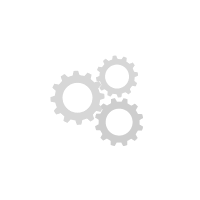 Afterpay
Afterpay Bank Deposit
Bank Deposit PayPal Express
PayPal Express Web Payments
Web Payments Web Payments
Web Payments MasterCard
MasterCard Visa
VisaWelcome to our website. If you continue to browse and use this website, you are agreeing to comply with and be bound by the following terms and conditions of use, which together with our privacy policy govern EagleXP T/A Workshop360’s relationship with you in relation to this website. If you disagree with any part of these terms and conditions, please do not use our website.
The term ‘EagleXP T/A Workshop360’ or ‘us’ or ‘we’ refers to the owner of the website whose registered office is Unit 1, 18 Gravel Pit Road, Darra, QLD, 4076. Our ABN is 14 622 985 068. The term ‘you’ refers to the user or viewer of our website.
The use of this website is subject to the following terms of use:
This Privacy Policy describes how your personal information is collected, used, and shared when you visit or make a purchase from www.workshop360.com.au (the “Site”).
When you visit the Site, we automatically collect certain information about your device, including information about your web browser, IP address, time zone, and some of the cookies that are installed on your device. Additionally, as you browse the Site, we collect information about the individual web pages or products that you view, what websites or search terms referred you to the Site, and information about how you interact with the Site. We refer to this automatically collected information as “Device Information”.
We collect Device Information using the following technologies:
Additionally, when you make a purchase or attempt to make a purchase through the Site, we collect certain information from you, including your name, billing address, shipping address, payment information (including credit card numbers & payment account numbers Paypal, Afterpay, ZipPay), email address, and phone number. We refer to this information as “Order Information”.
When we talk about “Personal Information” in this Privacy Policy, we are talking both about Device Information and Order Information.
We use the Order Information that we collect generally to fulfil any orders placed through the Site (including processing your payment information, arranging for shipping, and providing you with invoices and/or order confirmations). Additionally, we use this order information to:
We use the Device Information that we collect to help us screen for potential risk and fraud (in particular, your IP address), and more generally to improve and optimize our Site (for example, by generating analytics about how our customers browse and interact with the Site, and to assess the success of our marketing and advertising campaigns).
We share your Personal Information with third parties to help us use your Personal Information, as described above.
We also use Google Analytics to help us understand how our customers use the Site-you can read more about how Google uses your Personal Information here: https://www.google.com/intl/en/policies/privacy/. You can also opt-out of Google Analytics here: https://tools.google.com/dlpage/gaoptout.
Lastly, we may also share your Personal Information to comply with applicable laws and regulations, to respond to a subpoena, search warrant or other lawful request for information we receive, or to otherwise protect our rights.
As described above, we use your Personal Information to provide you with targeted advertisements or marketing communications we believe may be of interest to you. For more information about how targeted advertising works, you can visit the Network Advertising Initiative’s (“NAI”) educational page at http://www.networkadvertising.org/understanding-online-advertising/how-does-it-work.
You can opt out of targeted advertising by:
Facebook - https://www.facebook.com/settings/?tab=ads
Google - https://www.google.com/settings/ads/anonymous
Bing - https://advertise.bingads.microsoft.com/en-us/resources/policies/personalized-ads
Additionally, you can opt-out of some of these services by visiting the Digital Advertising Alliance’s opt-out portal at: http://optout.aboutads.info/.
You can also do a blanket opt-out of targeted advertising at http://www.youronlinechoices.com.au/ for companies who have signed up to “Your Online Choices”.
This website uses the Google AdWords remarketing service to advertise on third party websites (including Google) to previous visitors to our site. It could mean that we advertise to previous visitors who have completed a task on our site, for example using the contact form to make an enquiry or making a purchase.
This could be in the form of an advertisement on the Google search results page, or a site in the Google Display Network. Third-party vendors, including Google, use cookies to serve ads based on someone’s past visits to this website. Of course, any data collected will be used in accordance with our own privacy policy and Google’s privacy policy.
You can set preferences for how Google advertises to you using the Google Ad Preferences page.
Please note that we do not alter our Site’s data collection and use practices when we see a Do Not Track signal from your browser.
Under Australia Consumer Law you are entitled to rights regarding the collection and usage of your information. For more information on your rights visit the ACCC website: www.accc.gov.au
When you place an order through the Site, we will maintain your Order Information for our records unless and until you ask us to delete this information.
We may update this privacy policy from time to time in order to reflect, for example, changes to our practices or for other operational, legal or regulatory reasons.
For more information about our privacy practices, if you have questions, or if you would like to make a complaint, please contact us by e-mail at admin@workshop360.com.au or by mail using the details provided below:
Unit 1/18 Gravel Pit Road, DARRA, QLD, 4076, AUSTRALIA


Add your favourites to cart

Select Afterpay at checkout

Log into or create your Afterpay account, with instant approval decision

Your purchase will be split into 4 payments, payable every 2 weeks
All you need to apply is to have a debit or credit card, to be over 18 years of age, and to be a resident of country offering Afterpay
Late fees and additional eligibility criteria apply. The first payment may be due at the time of purchase
For complete terms visit afterpay.com/terms


